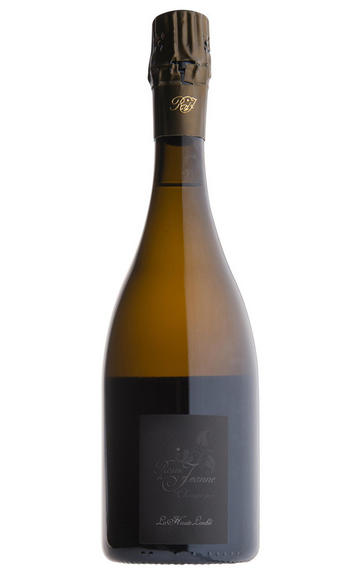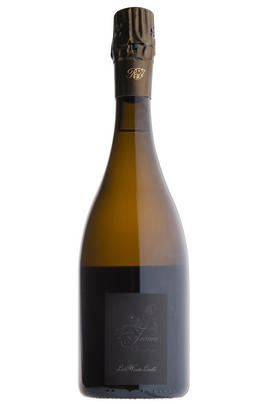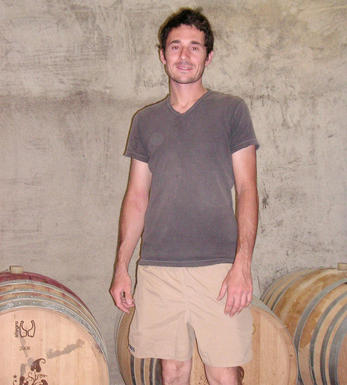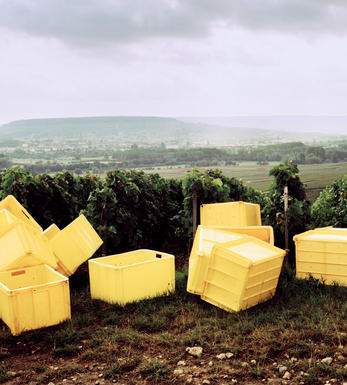
2005 Champagne Roses de Jeanne, Cédric Bouchard, La Haute Lemblé, Blanc deBlancs, Brut

Critics reviews
Bouchard farms just under three hectares of vineyards. There are two ranges; the Inflorescence wines are made from vineyards owned by Bouchard's father, while the Roses de Jeanne wines are made from vineyards Bouchard owns himself. The vineyards are cropped to yields that would be considered miniscule in any region in the world, but are shockingly low compared to the average in Champagne, where high yields are prevalent. Because of the low yields, the wines reveal a very fine and subtle mousse.
The wines are made from hand harvested fruit, crushed by foot and fermented with natural yeasts. Bouchard prefers stainless steel, as he believes the neutrality of steel allows for the maximum amount of expression of his philosophy, which is single-vineyard,single vintage and single-variety bottlings.
(Antonio Galloni - Wine Advocate - Dec 08)
About this WINE

Domaine Cedric Bouchard
Cedric Bouchard is an enthusiastic and talented young grower who established his own Champagne House, Roses de Jeanne in 2000. At the time he started out as the smaller owner to produce his own label, with a total 1.09ha under vines. He has since emerged as one of the most promising, small Champagne producers, based in Aube.
Centred on the Medieval city of Troyes, and well on the way to Burgundy, the Aube is a completely autonomous area, its Champagnes shaped by the distinctive clay limestone soils and , of course by the warmer microclimate. This is Pinot Noir country, and in the enigmatic and almost Byronic Cédric Bouchard it may well have found its champion. Youthful ideals have prompted Cédric to eschew the methodology of his family and to set out on his own, practising a viticulture which is in essence (although not formally certified) bio-dynamic.
There are two ranges; the Inflorescence wines are made from vineyards owned by Bouchard's father, while the Roses de Jeanne wines are made from vineyards Bouchard owns himself.
The cuvées include: Two Blancs de Noirs Brut (100% Pinot Noir): Les Ursules from a densely planted, very low-yield single Pinot parcel and Inflorescence (from several small parcels of Pinot Noir), a Rosé de Saignée, Le Creux d'Enfer (100% Pinot Noir) and La Haute-Lemblée, Blanc de Blancs (100% Chardonnay).

Champagne
Our wine buyers leave no stone unturned in their quest to find the best Champagnes, and Berry Bros. & Rudd takes particular pride in its eclectic range of artisan Champagnes that represent a real sense of terroir, original winemaking, labour-intensive viticulture (often organic/biodynamic) and the uncompromising excellence of the end product.
How Champagne is made
In 1668, in the village of Hautvillers, the monk turned cellar master, Dom Pérignon, is said to have discovered how to make sparkling wine; while the same technique is used all over the world today, the region of Champagne continues to make some of the finest.
So what makes wine sparkle? Adding a solution of sugar and yeast to a white wine starts another fermentation in the bottle which results in the bubbles. Once the yeasts have done their job, a sediment known as ‘lees’ collects on the side of the bottle; contact with this deposit during maturation gives the wine its characteristic flavours of freshly-baked bread, toast and biscuit. Once this sediment is isolated (remuage) and removed (dégorgement), the Champagne is topped up with a sugar solution to make it dry or sweet
The Champagne Wine Region
Champagne is the most northerly wine region in France and is situated north-east of Paris. There are three main vineyard areas: Côte des Blancs, Vallée de la Marne and Montagne de Reims.
Ripeness of the grapes is often a problem, which is one reason why a blend of grape varieties is usually used: the white Chardonnay to give fruit and elegance, and two reds – Pinot Noir (particularly to provide a ‘backbone’) and Pinot Meunier.
In Champagne there are around 15,000 growers and 290 Champagne houses. Traditionally, growers have sold their grapes to the Champagne houses which account for 70 percent of production and 90 percent of exports. Recently, increasing numbers of growers are making growers’ Champagnes themselves, using their own grapes.
The Champagne houses used to be organized into a Syndicat des Grandes Marques, which had 28 members, not all of them of equal quality. That has now been superseded by the Club des Grandes Marques, with 24 participants: Ayala, Billecart-Salmon, Bollinger, Canard- Duchêne, Deutz, Dom Pérignon, Heidsieck & Co. Monopole, Henriot, Krug, Lanson, Laurent-Perrier, Moët & Chandon, G.H. Mumm, Perrier Jouët, Joseph Perrier, Piper-Heidsieck, Pol Roger, Pommery, Ch. & A Prieur, Louis Roederer, Ruinart, Salon, Taittinger, Veuve Clicquot-Ponsardin.
Champagne Styles
Vintage Champagne
Made exclusively from grapes grown in a single year, this is produced only in the best years, and is released at about six years of age.
Non-Vintage Champagne
Most of the Champagne produced today is Non-Vintage, comprising the blended product of grapes from multiple vintages. Typically grapes from a single-year vintage will form the base of the blend, ranging from 15 percent to up to 40 percent.
Rosé Champagne
Typically light in colour, rosé Champagne is produced either by leaving the clear juice of black grapes to macerate on its skins for a brief time (known as saigneé), or by adding a small amount of Pinot Noir red wine to the sparkling wine cuvée. The saigneé method is more elaborate and costly, requiring highly-skilled winemaking, hence only a few houses still use it – among them Laurent Perrier and Louis Roederer.
Luxury (Prestige) Cuvée
Top of the range, this is vintage-dated. Famous examples include Louis Roederer's Cristal, Laurent-Perrier's Grand Siècle, Moët & Chandon's Dom Pérignon, Duval-Leroy's Cuvée Femme and Pol Roger's Cuvée Sir Winston Churchill.
Demi-Sec (Rich) Champagne
Demi-Sec or Rich is a medium-dry to medium-sweet style which occupies the other end of the spectrum from the standard dry "Brut" style. Brut Natural or Brut Zéro contains less than three grams of sugar per litre, Extra Brut has less than six grams of sugar per litre, and Brut less than 12 grams of sugar per litre.
Recently Disgorged Champagne
R.D. (Recently Disgorged) style was introduced for the first time by Madame Bollinger in 1961, on the 1952 Bollinger Grande Année vintage. Late disgorgement allows the Champagne to retain its freshness, vivacity and fruity expression, despite the ageing.
Blanc de Blancs Champagne
Blanc de Blancs denotes a Champagne made exclusively from Chardonnay grapes.
Blanc de Noirs Champagne
Blanc de Noir Champagnes are made exclusively from black grapes, Pinot Noir (typically) and Pinot Meunier grapes. Bollinger's prestige cuvée Vieilles Vignes Françaises is the lead example.

Chardonnay
Chardonnay is often seen as the king of white wine grapes and one of the most widely planted in the world It is suited to a wide variety of soils, though it excels in soils with a high limestone content as found in Champagne, Chablis, and the Côte D`Or.
Burgundy is Chardonnay's spiritual home and the best White Burgundies are dry, rich, honeyed wines with marvellous poise, elegance and balance. They are unquestionably the finest dry white wines in the world. Chardonnay plays a crucial role in the Champagne blend, providing structure and finesse, and is the sole grape in Blanc de Blancs.
It is quantitatively important in California and Australia, is widely planted in Chile and South Africa, and is the second most widely planted grape in New Zealand. In warm climates Chardonnay has a tendency to develop very high sugar levels during the final stages of ripening and this can occur at the expense of acidity. Late picking is a common problem and can result in blowsy and flabby wines that lack structure and definition.
Recently in the New World, we have seen a move towards more elegant, better- balanced and less oak-driven Chardonnays, and this is to be welcomed.


Buying options
Add to wishlist
Description
Only 1,200 bottles of this superb Chardonnay are made, the lieu dit in question covering a mere 0.118 of a hectare! Tasting the wine, it is easy to understand why The Wine Advocate rewarded it with 97 points for its 2004 vintage! It is extraordinarily complex, with dense buttery citric notes on the one hand and on the other more exotic flavours, redolent of beeswax and quince. An outstanding vin de terroir, with plenty of ebullience and fizz to boot!
(Simon Field MW, BBR Buyer)
wine at a glance
Delivery and quality guarantee